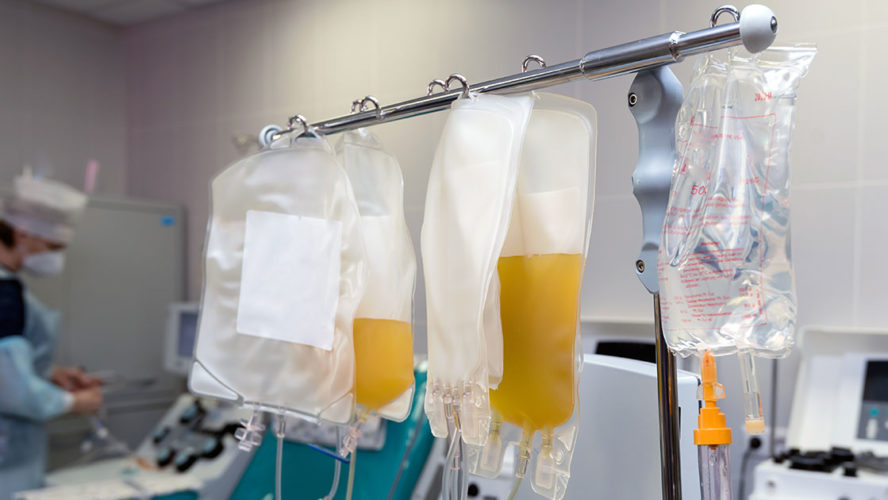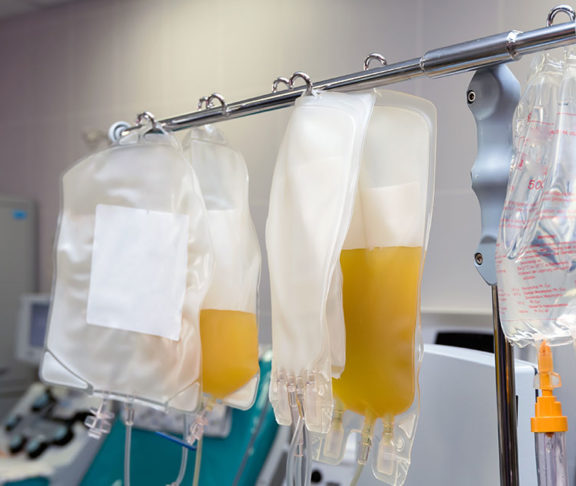While the estimated 7,000 rare diseases (those affecting fewer than 200,000 people) seem uncommon, more than 25 million Americans live with one. Many of them rely on treatments and medications that may not be known to the general public, such as plasma-derived therapies.

Tammy C. Black, M.P.A.
Vice President, Communications, Immune Deficiency Foundation
These therapies replace missing or deficient proteins needed to maintain a functional immune system. Typically, someone getting plasma-derived therapy is reliant on it for life, meaning they get it regularly for the rest of their lives to ensure they stay healthy. Because plasma is a biologic, products like immunoglobulin (Ig) can’t be made without plasma donors.
Source plasma is the liquid portion of blood with the blood cells separated out and collected from volunteers, and it is used exclusively to make plasma-derived therapies. Once the plasma-derived therapies are created, they are used by rare disease patients.
Where it helps
The most common use of source plasma is Ig, a type of protein extracted from plasma. Some of the disorders treated with Ig therapy are primary immunodeficiencies, a group of more than 400 rare, chronic disorders in which part of the body’s immune system functions improperly. These include idiopathic thrombocytopenic purpura (ITP), an autoimmune blood disorder; Guillain-Barre Syndrome (GBS), a rare disorder in which the body’s immune system attacks the nerves; Kawasaki disease, a condition that primarily affects children under the age of 5; secondary antibody deficiency (cancer), when the antibodies decrease significantly; and multisystem inflammatory syndrome in children, in which multiple organs become inflamed.
Some of the other therapies derived from source plasma are alpha-1 proteins, C1 esterase, and albumin. Alpha-1 proteinase inhibitor is given primarily to those with Alpha-1 antitrypsin deficiency, a hereditary disorder that affects liver and lung function in children and adults.
C1 esterase inhibitor (C1-INH) helps regulate inflammation and is utilized for patients with hereditary angioedema, and blood clotting factors are used for those with hemophilia and Von Willebrand disease, both of which are chronic diseases that inhibit clotting, thereby causing excessive bleeding. Albumin is utilized for those with certain liver conditions, burns, shock, and trauma.
Learned experience
Convalescent plasma is collected from patients who have recovered from a virus, and then used to help other patients and high-risk individuals develop antibodies in the blood against the virus. The plasma is collected from volunteers and used as a single-donor transfusion, or is manufactured into hyperimmune Ig (pooled from multiple donors, processed, and standardized) and given to high-risk individuals and other patients.
The patient who receives the convalescent plasma gets a massive boost to their adaptive immune system, which provides passive immunity against the virus.
Human blood is approximately 55 percent plasma, containing water, salts, enzymes, antibodies, and other substances. It helps blood clot, fights disease, and performs other vital functions.
Plasma donation is different from blood donation in a key way: After blood is removed from the body, the plasma is separated with a process called plasmapheresis, and blood cells and other components are put back into the body. Plasma is later broken down into different products that become pharmaceuticals, like Ig, many of which can’t be made in a lab.
The manufacturing and distribution of Ig, a plasma-derived treatment, is complex. The therapy is considered a specialty drug, not something available at your local pharmacy. At any given time, there can be a disruption with one or more members of the plasma and Ig supply or delivery chains, including manufacturers, distributors, specialty pharmacies, and various sites of care. Usually, these are disruptions that only affect a small number of individuals.
Right now, though, the plasma supply is tight, both here in the United States and globally. The need for plasma and plasma-derived products grows each year, but the complex nature of Ig products as biologics means it takes time to increase the supply. It’s not as simple as churning out more pills. For more information about plasma-derived therapies or plasma donation, please visit www.plasmahero.org.

